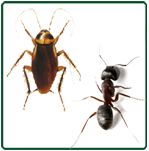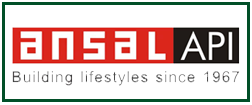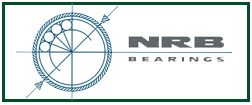|
 |
| If pests have only just come in contact with the residue they can appear quite normal. If they are in areas where they would not usually be seen, such as in the middle of the floor or wall during the day, the best thing to do is to monitor their condition. If new pests are continually being seen, then a callback may be necessary. |
| |
|
|
|
 Cockroaches are found all around the world. Despite their name, they are non-native species to America. Originally from tropical Africa, the American cockroach was transported to the Americas on slave/trade ships centuries ago.
Like other pests, Cockroaches by their nature and relatively big size are unpleasant to most people and can inspire entomophobia ("a fear of insects or other arthropods"). They are a source of embarrassment and can possibly lead to loss of business if spotted in commercial sectors. Because Cockroaches feed on human feces, migrate via sewers and contact unclean surfaces, they are capable of carrying and mechanically transmitting a variety of pathogenic agents that contaminate food products and cause diseases to the humans. Moreover, cockroaches in general are among common sources of allergic reactions. Recently, it has been documented that from 23 - 60% of asthmatic patients, especially children are sensitive to cockroach allergens (feces, saliva, egg cases and cast skins). Thus, the management of Cockroaches is a must wherever they occur. Cockroaches are found all around the world. Despite their name, they are non-native species to America. Originally from tropical Africa, the American cockroach was transported to the Americas on slave/trade ships centuries ago.
Like other pests, Cockroaches by their nature and relatively big size are unpleasant to most people and can inspire entomophobia ("a fear of insects or other arthropods"). They are a source of embarrassment and can possibly lead to loss of business if spotted in commercial sectors. Because Cockroaches feed on human feces, migrate via sewers and contact unclean surfaces, they are capable of carrying and mechanically transmitting a variety of pathogenic agents that contaminate food products and cause diseases to the humans. Moreover, cockroaches in general are among common sources of allergic reactions. Recently, it has been documented that from 23 - 60% of asthmatic patients, especially children are sensitive to cockroach allergens (feces, saliva, egg cases and cast skins). Thus, the management of Cockroaches is a must wherever they occur. |
|
Identification |
|
 |
Cockroaches are considered small roaches measuring to about 5/8 of an inch long |
 |
They received their name from the light yellow bands that are present on the wings of the adult and across the body of the young |
 |
Cockroaches feed on household items like books, envelopes, stamps, wallpaper, and draperies |
 |
They tend to avoid water and are more common in warmer, dryer climates |
 |
They are reported to spread at least 33 kinds of bacteria, six kinds of parasitic worms and at least seven other kinds of human pathogens |
 |
Cockroaches are usually nocturnal, or active primarily at night |
|
|
|
Management
|
|
 |
Inspection |
| |
A thorough inspection is key to a successful cockroach management plan. The purpose of an inspection is three-fold: to identify the life stages; to locate the source of the infestation, whether associated with sewer areas, wall voids, or any moist, warm and dark places in the building; and to determine the best treatment method. |
 |
Monitoring |
| |
Sticky traps are usually used to detect and monitor cockroach infestations. The traps should be left in common foraging places, such as, along baseboard, near the garbage, under sinks, under and behind stoves, in the cabinets, under and behind the refrigerator, in the bathroom, in corners, etc. Traps are normally used indoors and not recommended for outside use as they can be deteriorated quickly by weather conditions, dust, and debris, as well as they may capture non-target organisms. |
 |
Home Cleaning |
| |
If you have an infestation, eliminate food sources by cleaning up crumbs on floors, in cracks and crevices, or on counters. Wipe up spills and clean dirty dishes as soon as possible, and keep food in sealed containers or in the refrigerator. Throw trash away in containers with liners and tight lids, and empty them frequently. Regularly vacuum cracks and crevices to remove any food sources, including cockroach eggs or droppings, since feces contain pheromones that attract other roaches and feed young ones. Frequent vacuuming also goes a long way in preventing cockroach allergies. |
 |
Eliminate Habitat and Prevent Entry |
| |
Removing cockroach hiding places and entry points will drive cockroaches away and prevent future infestations. Inside the home, seal cracks in dark places like cupboards or building cracks with caulk, repair water leaks, and remove moisture in crawl spaces and other dark areas by increasing ventilation. Weather-seal doors and gaps around windows, and caulk around escutcheon plates that surround pipes or faucets that provide access to the wall voids or any other area that roaches could easily enter or hide. Eliminate clutter, especially piles of magazines, newspapers, cardboard or rags. Outside, remove stacks of wood and trash to minimize potential moist habitats, and trim shrubs and branches to increase light and ventilation. |
|
|
 Ants are very numerous and are one of the most successful insects. They are social insects and live in colonies which are located in: (1) Soil, referred to as "soil dwelling ants" (make mounds in the yard) and (2) Structures, referred to as "structure dwelling ants" (nest in structures, trees etc.). Ants will have either one or two pedicel nodes, which helps in identifying them (the pedicel is the "thin" segment which connects the abdomen to the thorax). The biology and habits of each ant species are different so the following is a general description of the ant species which can be pests in our area. Ants are very numerous and are one of the most successful insects. They are social insects and live in colonies which are located in: (1) Soil, referred to as "soil dwelling ants" (make mounds in the yard) and (2) Structures, referred to as "structure dwelling ants" (nest in structures, trees etc.). Ants will have either one or two pedicel nodes, which helps in identifying them (the pedicel is the "thin" segment which connects the abdomen to the thorax). The biology and habits of each ant species are different so the following is a general description of the ant species which can be pests in our area.
|
|
Identification |
|
 |
# of Node Segments: One |
 |
# of Sizes of Workers: Many |
 |
Size of Workers: 1/8 to 5/8 inch |
 |
Shape of Thorax: Evenly rounded, lacks spines |
 |
# of Antenna Segments: 12 |
 |
Antennal Club: None |
 |
Tip of Abdomen: Has circle of hairs, no stinger |
 |
Color: Varies with species; black, brown, red, red/black |
 |
Other ID tips: Do not go by size or color. Look for evenly rounded thorax, and circle of hairs at tip of abdomen. Often confused with Field Ants |
|
|
Management
|
|
 |
The basic treatment procedure would consist of an application of a non-repellent material to provide a residual barrier mainly on the exterior, but also in selected interior perimeter areas. We recommend that this service be done twice per year - Spring and Fall, thereby giving year round control. Control methods may vary slightly with the difference species. |
|
|
|
|
|
| |
|
| |
|


 Cockroaches are found all around the world. Despite their name, they are non-native species to America. Originally from tropical Africa, the American cockroach was transported to the Americas on slave/trade ships centuries ago.
Like other pests, Cockroaches by their nature and relatively big size are unpleasant to most people and can inspire entomophobia ("a fear of insects or other arthropods"). They are a source of embarrassment and can possibly lead to loss of business if spotted in commercial sectors. Because Cockroaches feed on human feces, migrate via sewers and contact unclean surfaces, they are capable of carrying and mechanically transmitting a variety of pathogenic agents that contaminate food products and cause diseases to the humans. Moreover, cockroaches in general are among common sources of allergic reactions. Recently, it has been documented that from 23 - 60% of asthmatic patients, especially children are sensitive to cockroach allergens (feces, saliva, egg cases and cast skins). Thus, the management of Cockroaches is a must wherever they occur.
Cockroaches are found all around the world. Despite their name, they are non-native species to America. Originally from tropical Africa, the American cockroach was transported to the Americas on slave/trade ships centuries ago.
Like other pests, Cockroaches by their nature and relatively big size are unpleasant to most people and can inspire entomophobia ("a fear of insects or other arthropods"). They are a source of embarrassment and can possibly lead to loss of business if spotted in commercial sectors. Because Cockroaches feed on human feces, migrate via sewers and contact unclean surfaces, they are capable of carrying and mechanically transmitting a variety of pathogenic agents that contaminate food products and cause diseases to the humans. Moreover, cockroaches in general are among common sources of allergic reactions. Recently, it has been documented that from 23 - 60% of asthmatic patients, especially children are sensitive to cockroach allergens (feces, saliva, egg cases and cast skins). Thus, the management of Cockroaches is a must wherever they occur.












